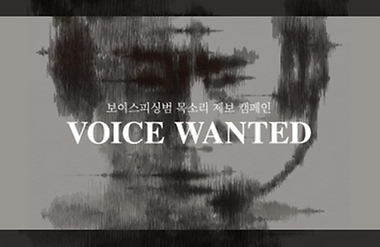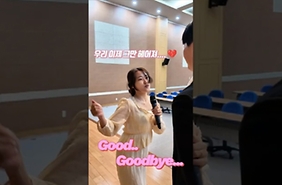콘텐츠 영역
문화재청(청장 정재숙)은 지난 3월 31일, 유네스코 인류무형문화유산 대표목록에 「한국의 탈춤」을 등재하기 위한 신청서를 유네스코 본부에 제출하였다.
「한국의 탈춤」은 이후 유네스코 사무국의 검토와 평가기구의 심사를 거치게 되며, 2022년 12월 경 개최되는 제17차 유네스코 무형문화유산보호협약 정부간위원회에서 등재여부가 최종 결정될 것이다.
「한국의 탈춤」(Talchum, Mask Dance Drama in the Republic of Korea)은 ▲ 양주별산대놀이(국가무형문화재 제2호), ▲ 통영오광대(국가무형문화재 제6호), ▲ 고성오광대(국가무형문화재 제7호), ▲ 강릉관노가면극(국가무형문화재 제13호 강릉단오제), ▲ 북청사자놀음(국가무형문화재 제15호), ▲ 봉산탈춤(국가무형문화재 제17호), ▲ 동래야류(국가무형문화재 제18호), ▲ 강령탈춤(국가무형문화재 제34호), ▲ 수영야류(국가무형문화재 제43호), ▲ 송파산대놀이(국가무형문화재 제49호), ▲ 은율탈춤(국가무형문화재 제61호), 하회별신굿탈놀이(국가무형문화재 제69호), ▲ 가산오광대(국가무형문화재 제73호), ▲ 속초사자놀이(강원무형문화재 제31호), ▲ 퇴계원산대놀이(경기무형문화재 제52호), ▲ 진주오광대(경남무형문화재 제27호), ▲ 김해오광대(경남무형문화재 제37호), ▲ 예천청단놀음(경북무형문화재 제42호) 등 13개 국가무형문화재와 5개 시도무형문화재로 구성되어 있다.
우리나라의 탈춤은 무용, 음악, 연극의 요소가 전부 들어있는 종합예술이며, 특히 관객의 동조나 야유 같은 능동적인 참여까지 포함되어야 완성되는 적극적인 소통의 예술이다.
탈춤은 주로 전근대시대의 사회, 계급, 도덕적인 모순을 역동적이면서 유쾌하게 풍자하여 그 부조리함을 드러내는 내용이다. 등장인물의 성격을 과장하고 유형화한 탈을 쓰고 노래와 춤, 연극을 통해 의미를 전달한다. 하지만, 부조리와 갈등을 드러내고 단순히 풍자하는데 그치지 않고 화해의 춤으로 마무리되기 때문에 화해와 조화를 위한 전통유산이라는 가치도 지니고 있다.
또한, 내용과 형식의 자유로움은 사회비판적인 주제와 맞물려 현대의 예술창작에도 끊임없이 영감을 제공하고 있는데, 이와 같이 재창조되는 문화적 전통으로서 공동체에 정체성과 연속성을 부여한다는 점에서도 유네스코 무형문화유산 보호협약의 정신에도 부합하는 무형유산이다.
「한국의 탈춤」 등재신청에 참여한 국가무형문화재와 시도무형문화재를 망라한 각 탈춤 보존단체들은 공연, 교육, 체험교육 등을 통해 탈춤의 전승에도 끊임없이 노력하고 있다.
문화재청은 탈춤의 인류무형문화유산 대표목록 등재를 위해 각 보존단체 및 관계부처와 협력하여 최선을 다할 예정이다.
ROK submitted the nomination of “Talchum, Mask Dance Drama in the Republic of Korea” to the UNESCO Representative List of Intangible Cultural Heritage of Humanity
Writer: World Heritage Division
Contact 1 Park Hyung-bin, senior researcher, World Heritage Division
Contact 2 Sim So-yi, programme specialist, World Heritage Division
The Cultural Heritage Administration of the Republic of Korea, headed by Administrator Chung Jae-suk, has announced that it has submitted the nomination of “Talchum, Mask Dance Drama in the Republic of Korea” to UNESCO for the Representative List of Intangible Cultural Heritage of Humanity of the 2003 Convention.
“Talchum, Mask Dance Drama in the Republic of Korea” consists of 18 elements of nationally and provincially designated intangible cultural.
Talchum is a performing art that encompasses dance, music, and theater. In a talchum performance, an ensemble of six to ten musicians accompany masked actors who sing and dance and exchange verbal interactions through theatrical movements.
The primary themes of talchum include hypocrisy and arrogance of the nobility, and people’s suffering under patriarchal, pre-modern society. Diverse social issues are humorously expressed through dramatic combinations of songs, dances, movements, and words. Masks, the looks of which show exaggerated and typified representations of everyday personages, are an indispensable element in the presentation of talchum.
A Korean mask-dance drama does not require a formal stage, and those who watch a mask-dance drama are not passive spectators, but important participants. They complete the production with their cheers and boos as the drama unfolds. Talchum is a dynamic theatrical flow of action and sound created through the combined efforts of both the players and spectators.
Themed around the criticism of the absurdities and ills of traditional society, the Korean mask dance dramas illustrate the escalation of conflicts stemming from these issues, but eventually end either with a reconciliatory dance encompassing all parties or in the promotion of virtue and punishment of vice. Therefore, talchum is not really an art about conflict, but one about harmony and reconciliation. This meshes well with the spirit of mutual respect among communities that is enshrined in the 2003 Convention.
Eighteen safeguarding associations from each element have participated in the nomination, which, until today, have endearvored to transmit talchum to future generations through performances and formal and non-formal educations.
The nomination of “Talchum, Mask Dance Drama in the Republic of Korea” will go through technical completeness check by the Secretariat of the 2003 Convention and then be forwarded to the Evaluation Body. The inscription of the nomination will be decided during the 17th Session of the Intergovernmental Committee for the Safeguarding of the Intangible Cultural Heritage scheduled to be held in December, 2022. The Cultural Heritage Administration will continue its effort to inscribe talchum on the Representative List in collaboration with the safeguarding associations and relevant authorities including the Ministry of Foreign Affairs.
* 2003 Convention: The 2003 Convention for the Safeguarding of the Intangible Cultural Heritage
Adopted by the General Conference of the United Nations Educational, Scientific, and Cultural Organization(UNESCO) on 17th OCT 2003.
The purposes of the Convention are 1) to safeguard the intangible cultural heritage, 2) to ensure respect for the intangible cultural heritage of the communities, groups and individuals concerned, 3) to raise awareness at the local, national, international levels of the importance of the intangible cultural heritage, and of ensuring mutual appreciation thereof, 4) to provide for international cooperation and assistance.
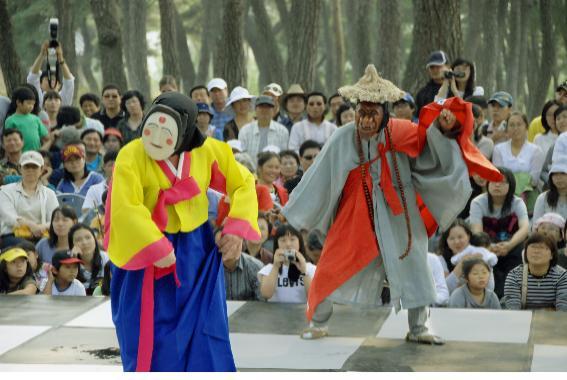
<하회별신굿탈놀이(HahoeByeolsingutTalnori, 국가무형문화재 제69호)>
「한국의 탈춤」은 이후 유네스코 사무국의 검토와 평가기구의 심사를 거치게 되며, 2022년 12월 경 개최되는 제17차 유네스코 무형문화유산보호협약 정부간위원회에서 등재여부가 최종 결정될 것이다.
「한국의 탈춤」(Talchum, Mask Dance Drama in the Republic of Korea)은 ▲ 양주별산대놀이(국가무형문화재 제2호), ▲ 통영오광대(국가무형문화재 제6호), ▲ 고성오광대(국가무형문화재 제7호), ▲ 강릉관노가면극(국가무형문화재 제13호 강릉단오제), ▲ 북청사자놀음(국가무형문화재 제15호), ▲ 봉산탈춤(국가무형문화재 제17호), ▲ 동래야류(국가무형문화재 제18호), ▲ 강령탈춤(국가무형문화재 제34호), ▲ 수영야류(국가무형문화재 제43호), ▲ 송파산대놀이(국가무형문화재 제49호), ▲ 은율탈춤(국가무형문화재 제61호), 하회별신굿탈놀이(국가무형문화재 제69호), ▲ 가산오광대(국가무형문화재 제73호), ▲ 속초사자놀이(강원무형문화재 제31호), ▲ 퇴계원산대놀이(경기무형문화재 제52호), ▲ 진주오광대(경남무형문화재 제27호), ▲ 김해오광대(경남무형문화재 제37호), ▲ 예천청단놀음(경북무형문화재 제42호) 등 13개 국가무형문화재와 5개 시도무형문화재로 구성되어 있다.
우리나라의 탈춤은 무용, 음악, 연극의 요소가 전부 들어있는 종합예술이며, 특히 관객의 동조나 야유 같은 능동적인 참여까지 포함되어야 완성되는 적극적인 소통의 예술이다.
탈춤은 주로 전근대시대의 사회, 계급, 도덕적인 모순을 역동적이면서 유쾌하게 풍자하여 그 부조리함을 드러내는 내용이다. 등장인물의 성격을 과장하고 유형화한 탈을 쓰고 노래와 춤, 연극을 통해 의미를 전달한다. 하지만, 부조리와 갈등을 드러내고 단순히 풍자하는데 그치지 않고 화해의 춤으로 마무리되기 때문에 화해와 조화를 위한 전통유산이라는 가치도 지니고 있다.
또한, 내용과 형식의 자유로움은 사회비판적인 주제와 맞물려 현대의 예술창작에도 끊임없이 영감을 제공하고 있는데, 이와 같이 재창조되는 문화적 전통으로서 공동체에 정체성과 연속성을 부여한다는 점에서도 유네스코 무형문화유산 보호협약의 정신에도 부합하는 무형유산이다.
「한국의 탈춤」 등재신청에 참여한 국가무형문화재와 시도무형문화재를 망라한 각 탈춤 보존단체들은 공연, 교육, 체험교육 등을 통해 탈춤의 전승에도 끊임없이 노력하고 있다.
문화재청은 탈춤의 인류무형문화유산 대표목록 등재를 위해 각 보존단체 및 관계부처와 협력하여 최선을 다할 예정이다.
ROK submitted the nomination of “Talchum, Mask Dance Drama in the Republic of Korea” to the UNESCO Representative List of Intangible Cultural Heritage of Humanity
Writer: World Heritage Division
Contact 1 Park Hyung-bin, senior researcher, World Heritage Division
Contact 2 Sim So-yi, programme specialist, World Heritage Division
The Cultural Heritage Administration of the Republic of Korea, headed by Administrator Chung Jae-suk, has announced that it has submitted the nomination of “Talchum, Mask Dance Drama in the Republic of Korea” to UNESCO for the Representative List of Intangible Cultural Heritage of Humanity of the 2003 Convention.
“Talchum, Mask Dance Drama in the Republic of Korea” consists of 18 elements of nationally and provincially designated intangible cultural.
Talchum is a performing art that encompasses dance, music, and theater. In a talchum performance, an ensemble of six to ten musicians accompany masked actors who sing and dance and exchange verbal interactions through theatrical movements.
The primary themes of talchum include hypocrisy and arrogance of the nobility, and people’s suffering under patriarchal, pre-modern society. Diverse social issues are humorously expressed through dramatic combinations of songs, dances, movements, and words. Masks, the looks of which show exaggerated and typified representations of everyday personages, are an indispensable element in the presentation of talchum.
A Korean mask-dance drama does not require a formal stage, and those who watch a mask-dance drama are not passive spectators, but important participants. They complete the production with their cheers and boos as the drama unfolds. Talchum is a dynamic theatrical flow of action and sound created through the combined efforts of both the players and spectators.
Themed around the criticism of the absurdities and ills of traditional society, the Korean mask dance dramas illustrate the escalation of conflicts stemming from these issues, but eventually end either with a reconciliatory dance encompassing all parties or in the promotion of virtue and punishment of vice. Therefore, talchum is not really an art about conflict, but one about harmony and reconciliation. This meshes well with the spirit of mutual respect among communities that is enshrined in the 2003 Convention.
Eighteen safeguarding associations from each element have participated in the nomination, which, until today, have endearvored to transmit talchum to future generations through performances and formal and non-formal educations.
The nomination of “Talchum, Mask Dance Drama in the Republic of Korea” will go through technical completeness check by the Secretariat of the 2003 Convention and then be forwarded to the Evaluation Body. The inscription of the nomination will be decided during the 17th Session of the Intergovernmental Committee for the Safeguarding of the Intangible Cultural Heritage scheduled to be held in December, 2022. The Cultural Heritage Administration will continue its effort to inscribe talchum on the Representative List in collaboration with the safeguarding associations and relevant authorities including the Ministry of Foreign Affairs.
* 2003 Convention: The 2003 Convention for the Safeguarding of the Intangible Cultural Heritage
Adopted by the General Conference of the United Nations Educational, Scientific, and Cultural Organization(UNESCO) on 17th OCT 2003.
The purposes of the Convention are 1) to safeguard the intangible cultural heritage, 2) to ensure respect for the intangible cultural heritage of the communities, groups and individuals concerned, 3) to raise awareness at the local, national, international levels of the importance of the intangible cultural heritage, and of ensuring mutual appreciation thereof, 4) to provide for international cooperation and assistance.
<하회별신굿탈놀이(HahoeByeolsingutTalnori, 국가무형문화재 제69호)>
“이 자료는 문화재청의 보도자료를 전재하여 제공함을 알려드립니다.”
- 공공누리 출처표시의 조건에 따라 자유이용이 가능합니다. (텍스트)
- 단, 사진, 이미지, 일러스트, 동영상 등의 일부 자료는 문화체육관광부가 저작권 전부를 보유하고 있지 아니하므로, 반드시 해당 저작권자의 허락을 받으셔야 합니다.
정책브리핑 공공누리 담당자 안내
닫기
문의처 : 문화체육관광부 정책포털과
| 뉴스 |
|
|---|---|
| 멀티미디어 |
|
| 브리핑룸 |
|
| 정책자료 |
|
| 정부기관 SNS |
|
※ 브리핑룸 보도자료는 각 부·처·기관으로부터 연계로 자동유입되는 자료로 보도자료에 포함된 연락처로 문의
※ 전문자료와 전자책의 이용은 각 자료를 발간한 해당 부처로 문의
이전다음기사
다음기사원주, 해남, 청도, 고성 등 ‘생태테마관광 사업’ 새롭게 선정정책브리핑 게시물 운영원칙에 따라 다음과 같은 게시물은 삭제 또는 계정이 차단 될 수 있습니다.
- 1. 타인의 메일주소, 전화번호, 주민등록번호 등의 개인정보 또는 해당 정보를 게재하는 경우
- 2. 확인되지 않은 내용으로 타인의 명예를 훼손시키는 경우
- 3. 공공질서 및 미풍양속에 위반되는 내용을 유포하거나 링크시키는 경우
- 4. 욕설 및 비속어의 사용 및 특정 인종, 성별, 지역 또는 특정한 정치적 견해를 비하하는 용어를 게시하는 경우
- 5. 불법복제, 바이러스, 해킹 등을 조장하는 내용인 경우
- 6. 영리를 목적으로 하는 광고 또는 특정 개인(단체)의 홍보성 글인 경우
- 7. 타인의 저작물(기사, 사진 등 링크)을 무단으로 게시하여 저작권 침해에 해당하는 글
- 8. 범죄와 관련있거나 범죄를 유도하는 행위 및 관련 내용을 게시한 경우
- 9. 공인이나 특정이슈와 관련된 당사자 및 당사자의 주변인, 지인 등을 가장 또는 사칭하여 글을 게시하는 경우
- 10. 해당 기사나 게시글의 내용과 관련없는 특정 의견, 주장, 정보 등을 게시하는 경우
- 11. 동일한 제목, 내용의 글 또는 일부분만 변경해서 글을 반복 게재하는 경우
- 12. 기타 관계법령에 위배된다고 판단되는 경우
- 13. 수사기관 등의 공식적인 요청이 있는 경우
정책 NOW, MY 맞춤뉴스
정책 NOW
인기, 최신, 오늘의 영상 , 오늘의 사진
인기 뉴스
-
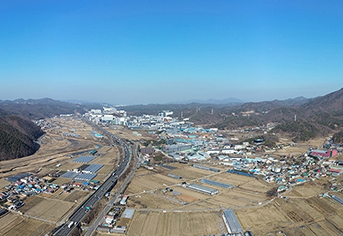 내년 수도권 공공택지 5만가구 이상 착공…3기 신도시 입주 시작
내년 수도권 공공택지 5만가구 이상 착공…3기 신도시 입주 시작
-
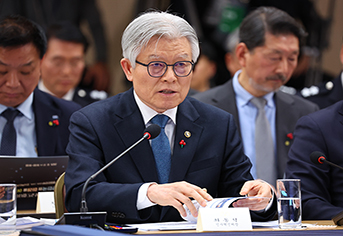 9급 공무원 공채시험, 종합적 사고력 평가 'PSAT'로 전환
9급 공무원 공채시험, 종합적 사고력 평가 'PSAT'로 전환
-
 대중교통비 무제한 환급…K-패스 '모두의 카드' 도입
대중교통비 무제한 환급…K-패스 '모두의 카드' 도입
-
 내년부터 아동수당 연령 단계적 확대…통합돌봄 전국 시행
내년부터 아동수당 연령 단계적 확대…통합돌봄 전국 시행
-
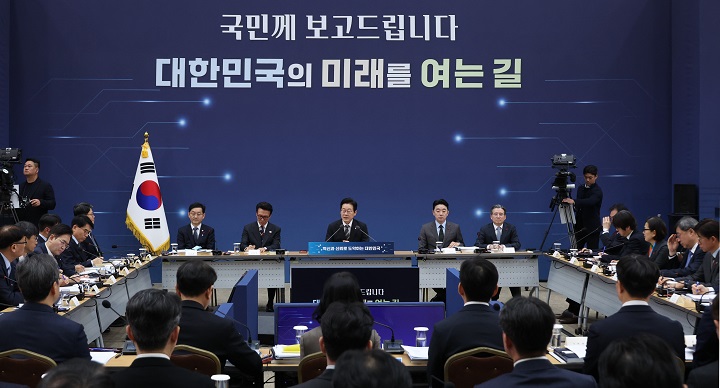 내년 세계 10위 독자 AI모델 개발…K-AI, 글로벌 시장 진출
내년 세계 10위 독자 AI모델 개발…K-AI, 글로벌 시장 진출
-
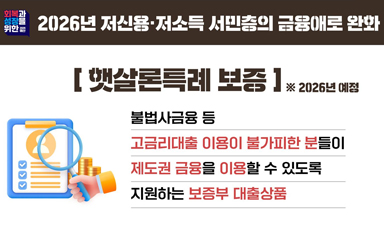 2026년 저신용·저소득 서민층의 금융애로 완화
2026년 저신용·저소득 서민층의 금융애로 완화
-
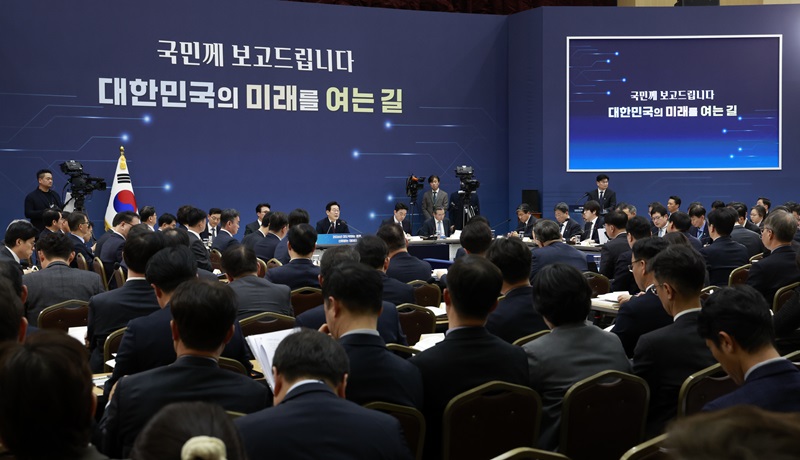 300억 이상 정부자산 매각 땐 국회 사전보고…헐값 매각 원천 차단
300억 이상 정부자산 매각 땐 국회 사전보고…헐값 매각 원천 차단
-
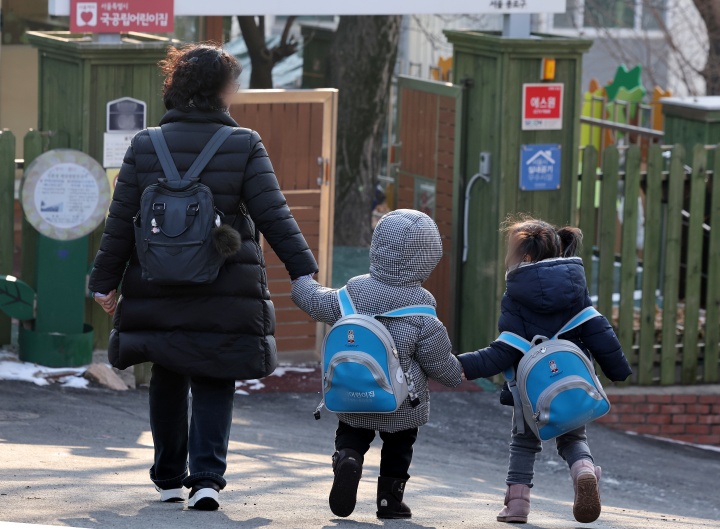 육아휴직 대체인력 지원 1개월 연장…내년 구직급여 상한액 ↑
육아휴직 대체인력 지원 1개월 연장…내년 구직급여 상한액 ↑
-
 'AI 3강 도약' 미래인재 양성…내년 무상교육·보육 지원 4세까지 확대
'AI 3강 도약' 미래인재 양성…내년 무상교육·보육 지원 4세까지 확대
-
 내년 농업 R&D 예산 15% 넘게 증가…첨단기술로 혁신 일으킨다
내년 농업 R&D 예산 15% 넘게 증가…첨단기술로 혁신 일으킨다
최신 뉴스
-
영상
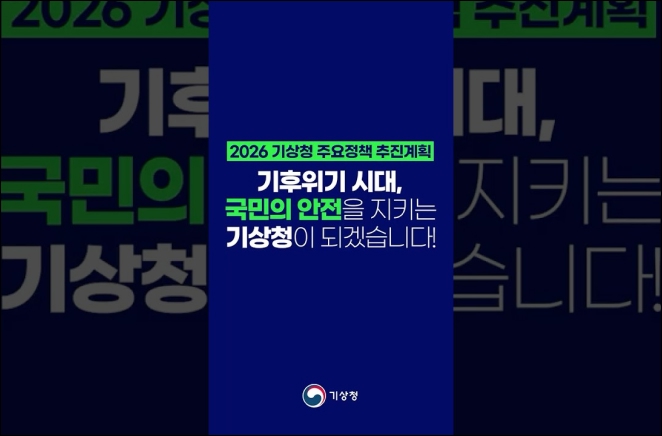 2026년 기상청은 이렇게 달라집니다!
2026년 기상청은 이렇게 달라집니다!
-
영상
 2026 법제처 업무보고 1편
2026 법제처 업무보고 1편
-
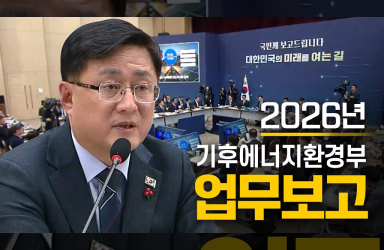 기후에너지환경부 2026 업무보고
기후에너지환경부 2026 업무보고
-
 기침 나올 때, 올바른 행동은?
기침 나올 때, 올바른 행동은?
-
영상
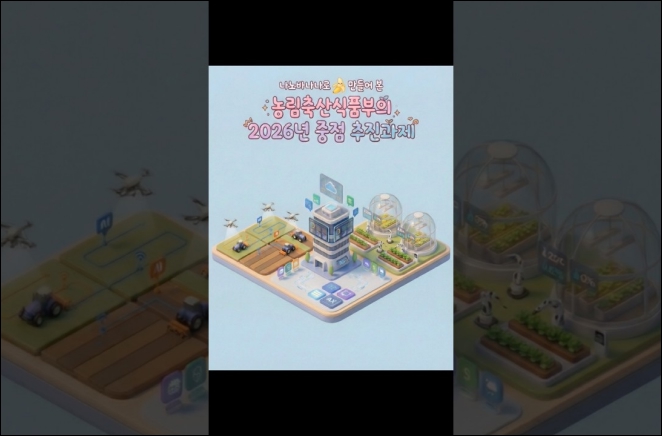 AI 나노 바나나로 만들어 본 농림축산식품부의 2026년
AI 나노 바나나로 만들어 본 농림축산식품부의 2026년
- 한-사우디 외교장관 통화(12.18.) 결과
- [보도자료] 김지형 위원장, 첫 현장 행보로 취약계층 플랫폼노동자와 소통
-
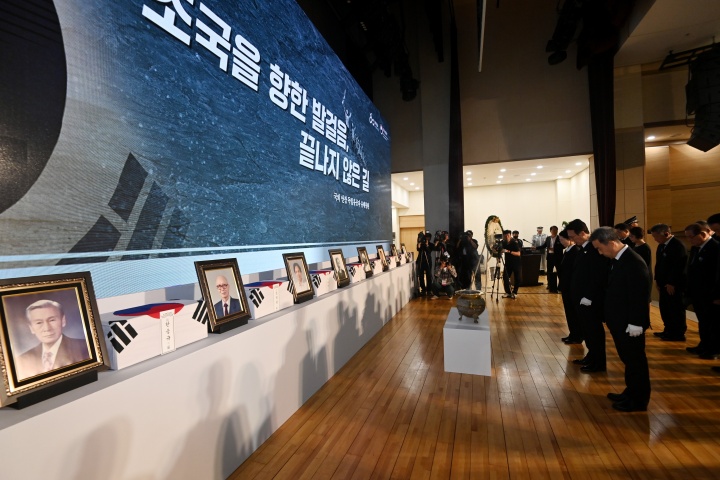 독립유공자 최소 2대 유족까지 보상…"특별한 희생에 특별한 보상"
독립유공자 최소 2대 유족까지 보상…"특별한 희생에 특별한 보상"
- 후속투자 유치 20조원 달성한 팁스, 13년만의 지원단가 상향 등 성장 지원 대폭 강화
- '글로컬 상권 조성으로 지역경제에 활력을!' 중기부, 제4차 소상공인 성장 릴레이 간담회 개최
 이 누리집은 대한민국 공식 전자정부 누리집입니다.
이 누리집은 대한민국 공식 전자정부 누리집입니다.





